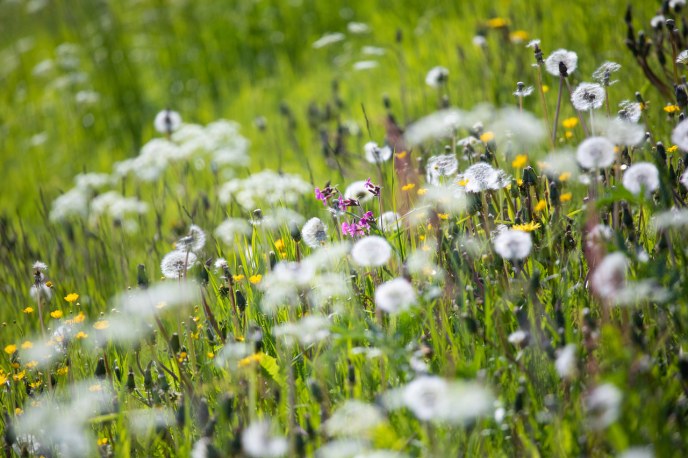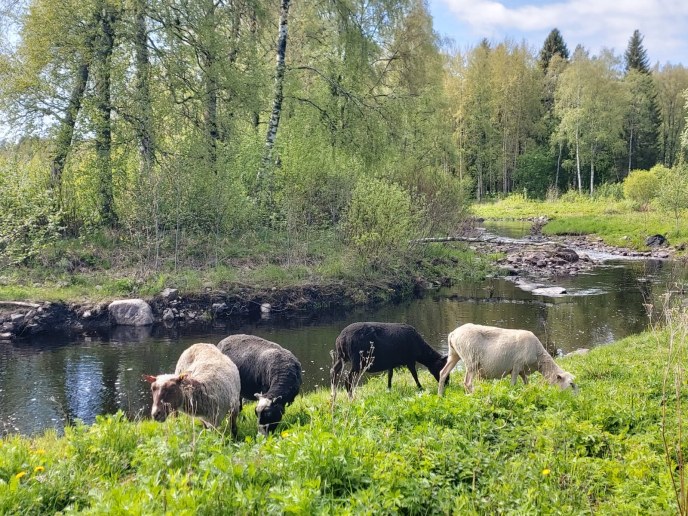Meadows

Green hay, colorful flowers, buzzing bees – the city of Oulu has numerous meadows. And more are added all the time!
Come in contact with nature
The meadows are tended to by mowing them a few times every year. The vegetation of meadows varies based on location. On some of the meadows the vegetation grows very high – even one meter tall – and on some meadows the growth remains knee-height.
Meadows cannot handle as much use as grass areas do. Thus, the meadows are located in locations of minor use. Sometimes there is a path crossing through them. Meadows offer diverse stimuli and experiences. The colorful shine and fragrance tempt many pollinators such as bees and butterflies. City meadows are an excellent place to come into contact with nature.
Considerate amounts of meadow plants can also be picked to brighten up your home in vases. The plants must be cut at least five centimeters off the ground.
Where are the meadows of Oulu?
There are meadows all over the city. You will find them in the Oulu map service.
The meadows are identified on the map with shades of brown and yellow. They are categorized into the following up-keep classes based on use and care need: use meadow, landscape meadow, border meadow, and landscape field.

Grazing animals
Sheep have been maintaining the meadow in Asemakylä beach meadow in Haukipudas and in Hietasaari by the birdwatching tower. Grazing animals consume the vegetation selectively and affect the meadow’s vegetation. They consume invasive species such as lupine and Indian balsam, so they help in prevention of difficult invasive species. Thanks to the grazing animals the areas remain open and their natural values intact.
You may go see and admire the grazing sheep by the fence. The sheep must not be disturbed or fed – it is important that they are allowed to graze and live in peace. The sheep find all the food they need in the fields and the grazing area will be changed if the vegetation ends during the summer.
The evolution of agriculture has altered meadows
Meadows are endangered traditional biotopes. Traditional biotopes are dry meadows, meadows, and woodland pastures that are formed by traditional livestock farming. Their number has significantly reduced along with the evolution of agriculture. Thus, fauna and flora that inhabit meadows are becoming rarer as their living environments diminish. Establishment of meadows in cities increased the survival chances of such species in the future. New meadows are not regular traditional biotopes, but they offer living environments for traditional species.
Nurmikot niityiksi Project
Some grassy areas are converted into meadows in Oulu. The continuous mowing is stopped, and the area is mowed only twice a year. Meadows develop gradually over the years. Meadows are developed in different parts of the city at their own pace.
The project also considers how the meadows fit into the landscape. The flora is more complex in meadows, so they offer nourishment for pollinators such as bumblebees, bees, and butterflies. Birds and small mammals also benefit from the nourishment and cover offered by meadows.
Meadow plants are planted
In the project, meadow plant seeds are planted in patched in parks. It is hoped that they will spread widely on meadows. The growth on the patches takes some years. The planted meadow plants must be left untouched so they can develop as hoped. Floral splendor can be expected in 2-3 years. Meadow patches have been planted in Tiedonkehto in Syynimaa, in the greenspace by the side of Sirppitie and Kuokkatie in Puolivälinkangas, and Toppilansalmi park.
In participatory budgeting, citizens of Oulu have suggested and voted for the establishment of meadows. Meadows of diverse flora are being planned for Valvatti park in Kuivasranta.
